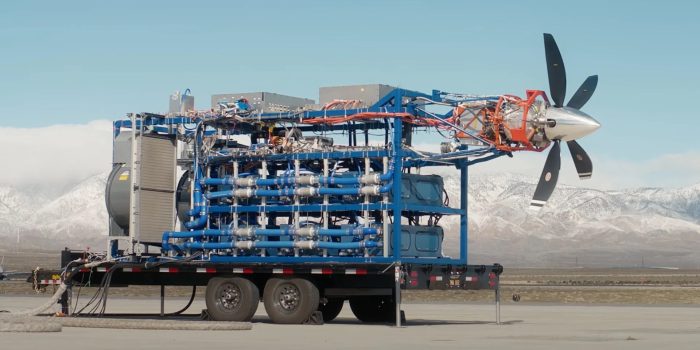A US company called Universal Hydrogen recently achieved a big goal in aviation. They tested a powerful fuel cell that uses liquid hydrogen to power planes. This engine, which was tested in California at the Mojave Air and Space Port is the biggest one of its kind in the world.
While people try to make flying less harmful to the environment, some companies are looking into using batteries for electric-powered flights. However, the limitations in weight and energy density of batteries have raised doubts about their feasibility for large haul flights, prompting attention towards hydrogen fuel cells as a promising carbon-free alternative, particularly for regional flights.

Universal Hydrogen previously made headlines by powering a 40-seater flight with hydrogen, demonstrating a potential range of up to 460 miles (740 km). However, commercializing this technology poses challenges, notably in accommodating fewer passengers due to the weight constraints of hydrogen fuel compared to fossil fuels.
To address this, companies like H2Fly have experimented with liquid hydrogen, which not only extends flight range but also reduces the system’s footprint, potentially allowing for more seats and addressing economic barriers to greener aviation.
Universal Hydrogen’s recent ground test of its liquid hydrogen system showcased impressive capabilities. The system, roughly the size of an air freight container, demonstrated seamless conversion of liquid hydrogen to hydrogen gas, ensuring continuous power supply without glitches.
Equipped with safety features like leak detection systems and vents, the module holds enough liquid hydrogen to power the company’s powertrain for three hours at full capacity, with potential for use in regional flights of up to 500 miles for aircraft like the ATR72.
This successful demonstration marks a crucial step towards realizing Universal Hydrogen’s vision for regional aviation powered by hydrogen. Co-founder and CEO Paul Eremenko emphasized the significance of integrating all components of their product portfolio, from filler/dispenser to storage module to powertrain, in this end-to-end demonstration. The company’s next objective involves upgrading their flight testbed to utilize the powertrain fueled by their liquid hydrogen modules.
Universal Hydrogen’s progress shows that more people are getting interested in using hydrogen for flying planes. This could change how smaller planes fly, making them cleaner and better for the environment. Despite some problems still left to be addressed such as technology improvement and supporting equipment, fossil fuel powered planes are very soon going to be replaced by hydrogen powered ones. This significant step marks the journey towards making the aviation industry less harmful to the environment.


